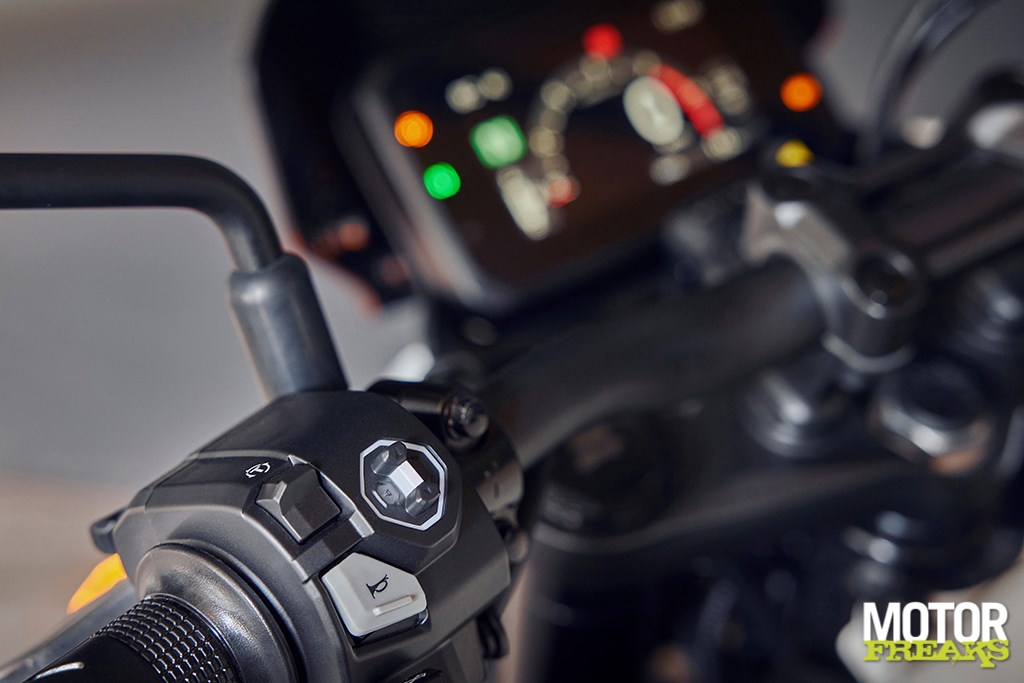Following the example of the CBR500R and CB500X, which will be known as the NX500 from 2024, Honda has also significantly updated the CB500F for the 2024 model year and has given it a new name, just like the X. From 2024, the naked version of the 500 platform will be known as the CB500 Hornet.

“A new name and a new look give the CB500 Hornet a fresh look heading into 2024,” Honda said in the press information of the naked family member of the A2 platform, previously known as CB500F. After the CB750 Hornet introduced at the beginning of this year, Honda has now expanded the Hornet name to three models: CB1000 Hornet, CB750 Hornet and CB500 Hornet.
Honda wanted to streamline the Naked models as a family, but did not extend that philosophy to the design: each of the three models has its own unique look, which is very special, to say the least. The whole idea behind a model family is to extend that familial face across the board. KTM started it with the DUKE, Kawasaki followed with the Z and Ninja and Yamaha did it with the MT. Just to name a few model families.
Not so with Honda, which has only streamlined the model name for the CB500 Hornet. Now the differences compared to the CB750 Hornet are a lot smaller than the new CB1000 Hornet, which is like a peas in a pod on the Kawasaki Z1000 that was taken out of production a few years ago, but still. And in all honesty: despite that, the CB1000 Hornet appeals most to the imagination, which would have been the most beautiful if all three had been given this face. Or if they had gone back to the design of the last Hornet, because it was razor sharp.

In terms of design, we may not be particularly happy with the new CB500 Hornet, but hey, tastes differ and there will undoubtedly be motorcyclists (not to mention female motorcyclists) who like it. We can’t imagine it, but hey, everyone has their own taste.
What makes us happy, on the other hand, are the other adjustments that the “Motorcycle Formally Known as CB500F” has undergone. Starting with the 5″ TFT color display that you can see from the saddle, which was taken from the CB750 Hornet and which Honda has also used on the new Transalp.
The TFT has no fewer than 4 different layouts and is easy to operate via new switches on the steering wheel. The TFT has – we would almost say, of course – Bluetooth connectivity and can be linked to the Honda RoadSync app. This new app allows easy turn-by-turn on-screen navigation, as well as the option (via a Bluetooth headset in your helmet) to make calls or listen to music.
Honda has not made any significant adjustments to the engine block and chassis, but it has made changes to the electronics and injection. Honda says it has adjusted the ECU to give the engine more pulling power from below, without this being at the expense of fuel consumption. Honda claims a consumption of 1:28.6 per liter, which, in combination with the 17-liter tank, gives the engine a range of almost 500 kilometers.
Most interestingly, Honda has equipped the little Hornet with traction control by adding what Big Red calls HSTC, Honda Selectable Torque Control. With a limited power of only 35 kW, the maximum permitted for the A2 driving license, this may seem like the biggest nonsense, but as long as it does not cause any disruption, we have no problem with it. We now know that traction control can sometimes be quite useful, even with little power.





– Thanks for information from Motorfreaks.